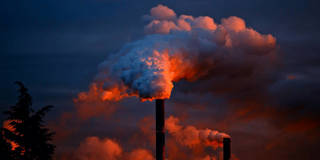Over the last few decades, oil prices have fluctuated widely. For policymakers, these fluctuations present a golden opportunity to advance the key global goals of mitigating climate change and building a more sustainable economy, all while boosting revenues and stabilizing consumer prices.
WASHINGTON, DC – Over the last few decades, oil prices have fluctuated widely – ranging from $10 to $140 a barrel – posing a challenge to producers and consumers alike. For policymakers, however, these fluctuations present an opportunity to advance the key global objectives – reflected in the Sustainable Development Goals adopted last September and the climate agreement reached in Paris in December – of mitigating climate change and building a more sustainable economy.
Recent oil-price fluctuations resemble the classic cobweb model of microeconomic theory. High prices spur increased investment in oil. But, given long lags between exploration and exploitation, by the time the new output capacity actually comes on stream, substitution has already taken place, and demand often no longer justifies the available supply. At that point, prices fall, and exploration and investment decline as well, including for oil substitutes. When new shortages develop, prices begin rising again, and the cycle repeats.
The cycle will continue, though other factors – such as the steadily declining costs of renewable energy and the shift toward less energy-intensive production processes – mean that it will probably spin within a lower range. In any case, a price increase is inevitable.

WASHINGTON, DC – Over the last few decades, oil prices have fluctuated widely – ranging from $10 to $140 a barrel – posing a challenge to producers and consumers alike. For policymakers, however, these fluctuations present an opportunity to advance the key global objectives – reflected in the Sustainable Development Goals adopted last September and the climate agreement reached in Paris in December – of mitigating climate change and building a more sustainable economy.
Recent oil-price fluctuations resemble the classic cobweb model of microeconomic theory. High prices spur increased investment in oil. But, given long lags between exploration and exploitation, by the time the new output capacity actually comes on stream, substitution has already taken place, and demand often no longer justifies the available supply. At that point, prices fall, and exploration and investment decline as well, including for oil substitutes. When new shortages develop, prices begin rising again, and the cycle repeats.
The cycle will continue, though other factors – such as the steadily declining costs of renewable energy and the shift toward less energy-intensive production processes – mean that it will probably spin within a lower range. In any case, a price increase is inevitable.